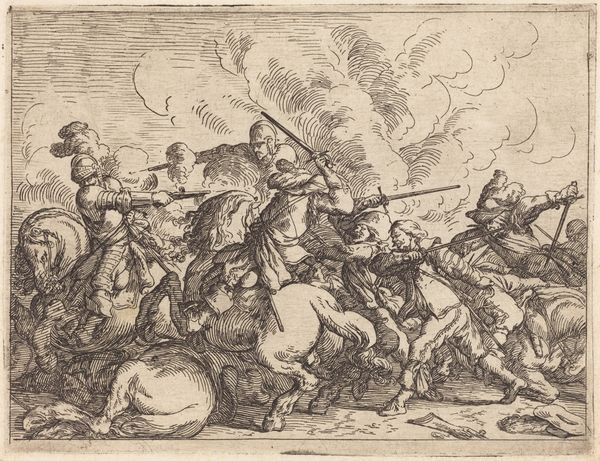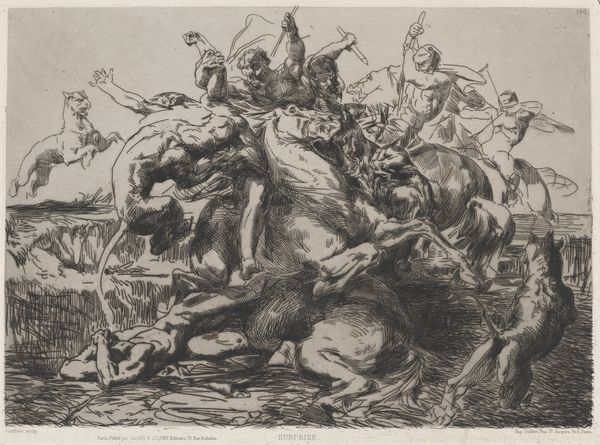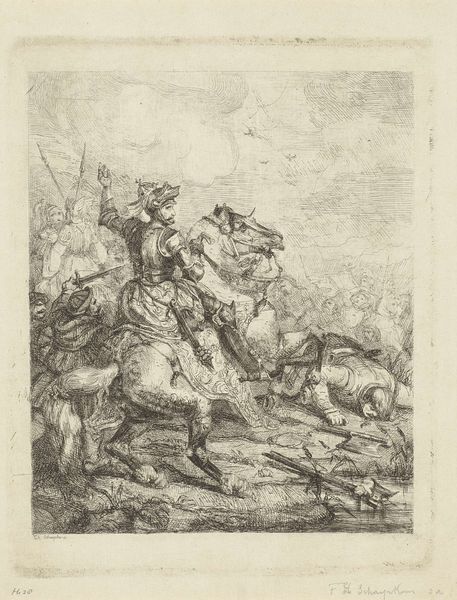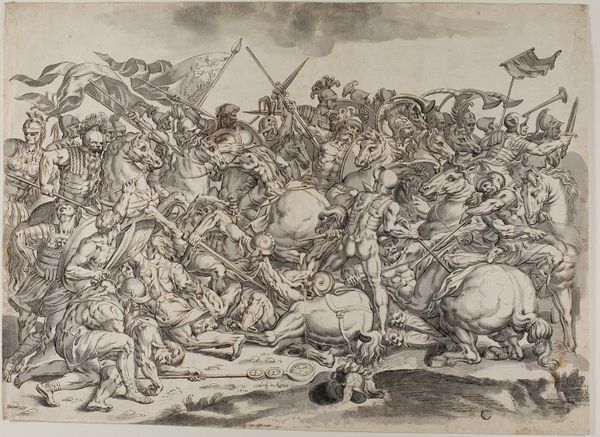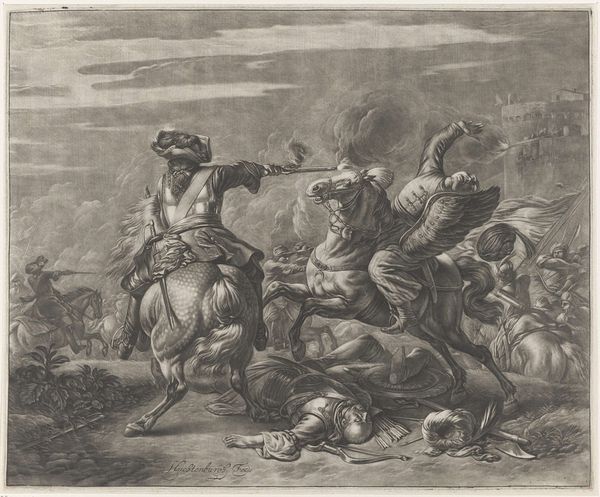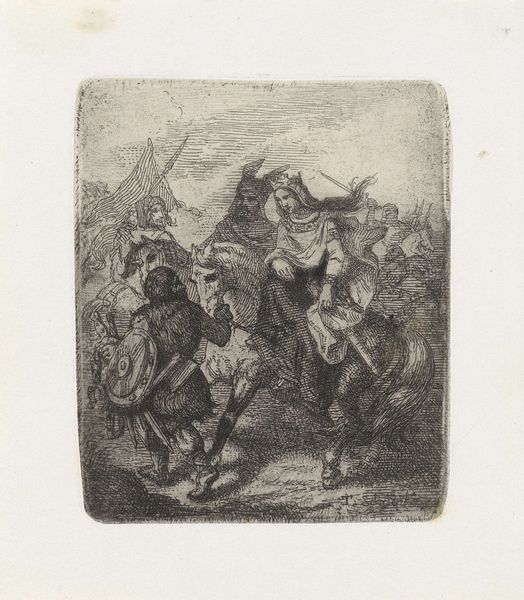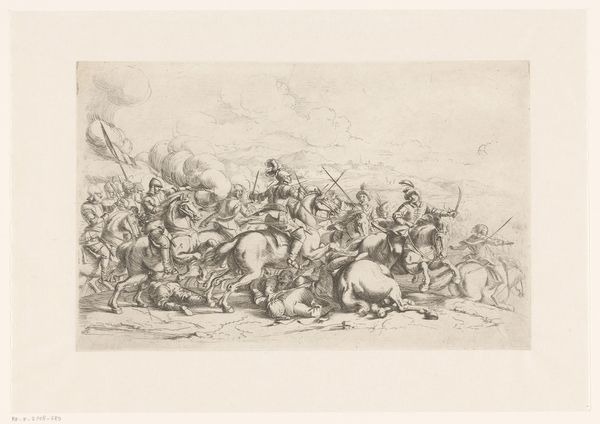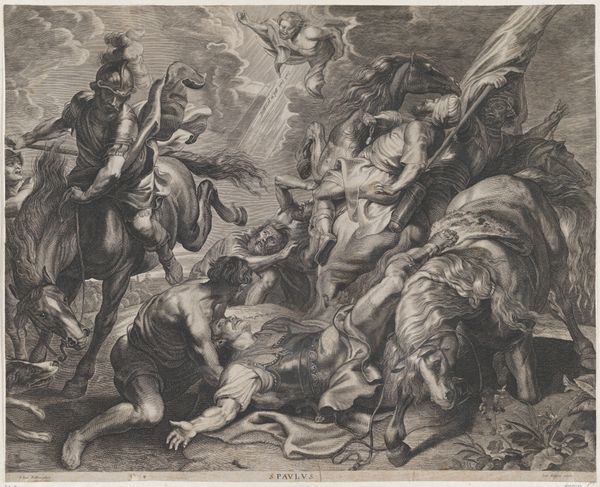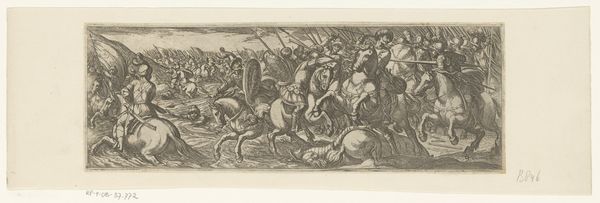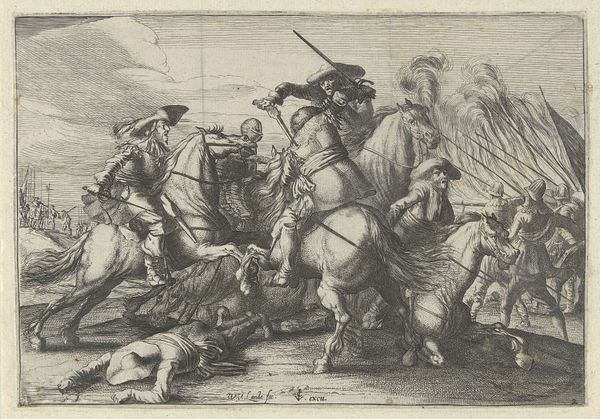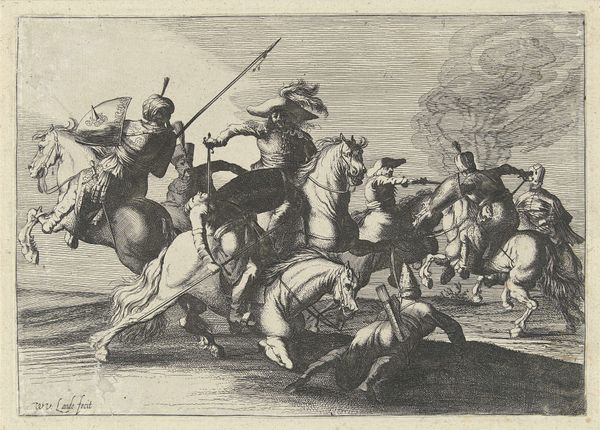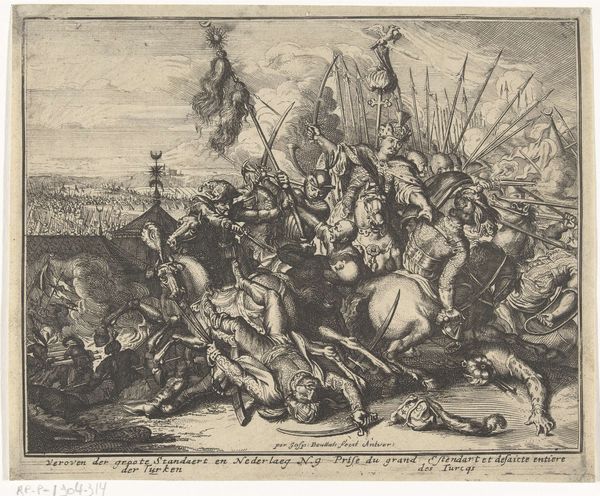
print, etching, engraving
medieval
narrative-art
etching
figuration
line
history-painting
engraving
Dimensions: height 193 mm, width 245 mm
Copyright: Rijks Museum: Open Domain
Curator: Here we have Theodoor Schaepkens' "Strijd van kruisvaarders," created between 1825 and 1883. It is an etching and engraving currently residing at the Rijksmuseum. Editor: The immediate impression is one of frenetic energy! The dynamism, particularly in the lines forming the horses and riders, propels the scene forward with a compelling visual force. Curator: Indeed, the composition relies heavily on the energy conveyed through line work. Note how Schaepkens uses varied line weights and densities to suggest depth and texture, crafting a highly active and layered space. The darker, more densely etched areas contrast vividly against the sparser, lighter regions. Editor: Beyond the formal arrangement, one can interpret the image as more than just line. For many, crusades are synonymous with faith and bloodshed, suggested by the prominently held crosses contrasting against chaotic combat. There's also the imagery of banners waving, evoking power and dominion in a holy war. Curator: Certainly, the contextual underpinnings of the crusades cannot be dismissed. However, examining the composition, consider how the arrangement drives our eye. We begin near the ground, the image almost heaves us upwards, with that single figure holding the cross the lightest area of the work, before fading into vague horizon above. Editor: The almost ghostly figure reinforces the symbolic gravity of the crusade beyond just war. The era evokes centuries of stories. The weight of that cultural narrative permeates the image; its symbols carry generations of shared meaning, both glorified and gruesome. Curator: Perhaps the success of this print is precisely how Schaepkens' command of line creates a composition with narrative dynamism, as the cultural weight provides context. It functions both as a fascinating pattern of shapes and a clear cultural expression of historical events. Editor: Ultimately, viewing it connects us to a period both romanticized and scrutinized, reminding us of art’s capacity to embody collective memory.
Comments
No comments
Be the first to comment and join the conversation on the ultimate creative platform.
